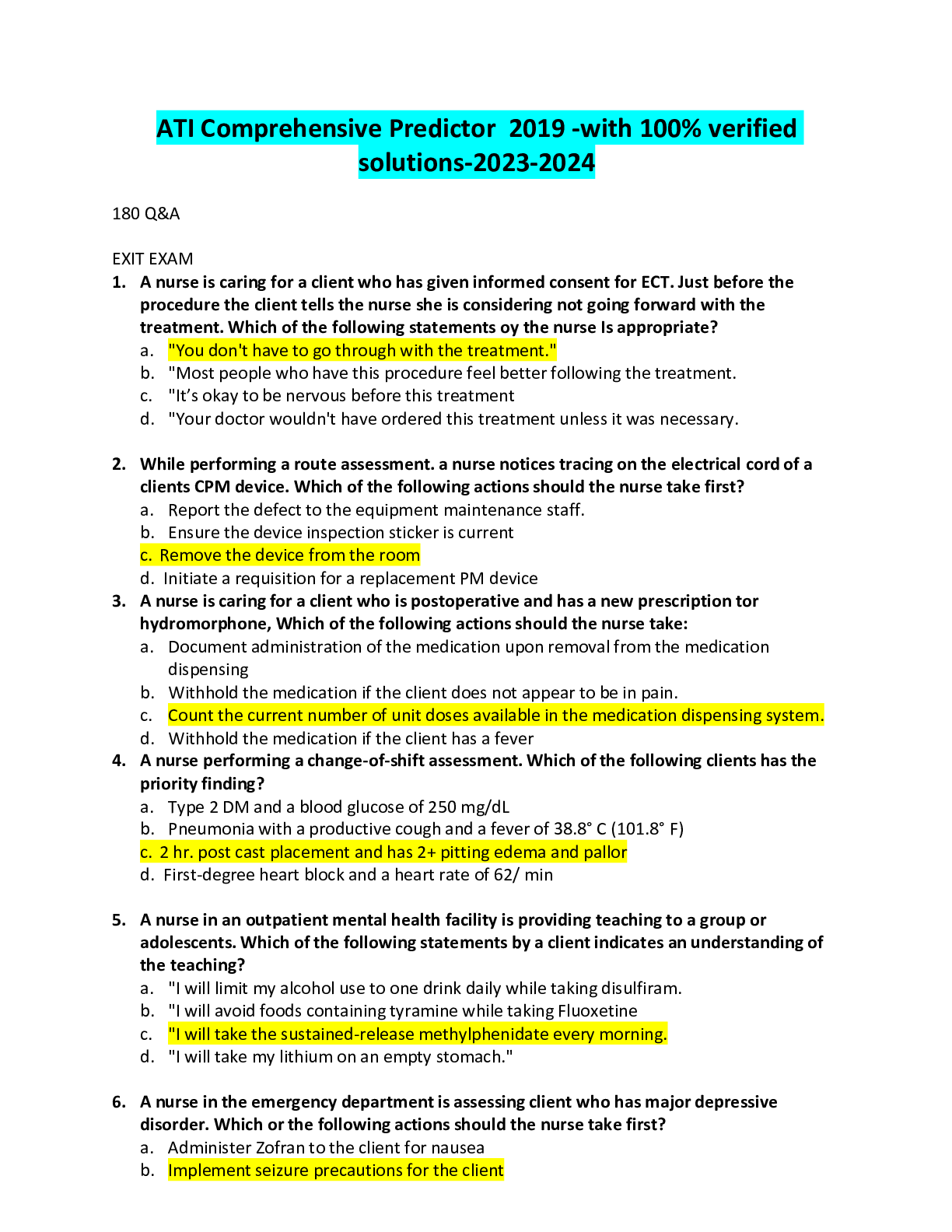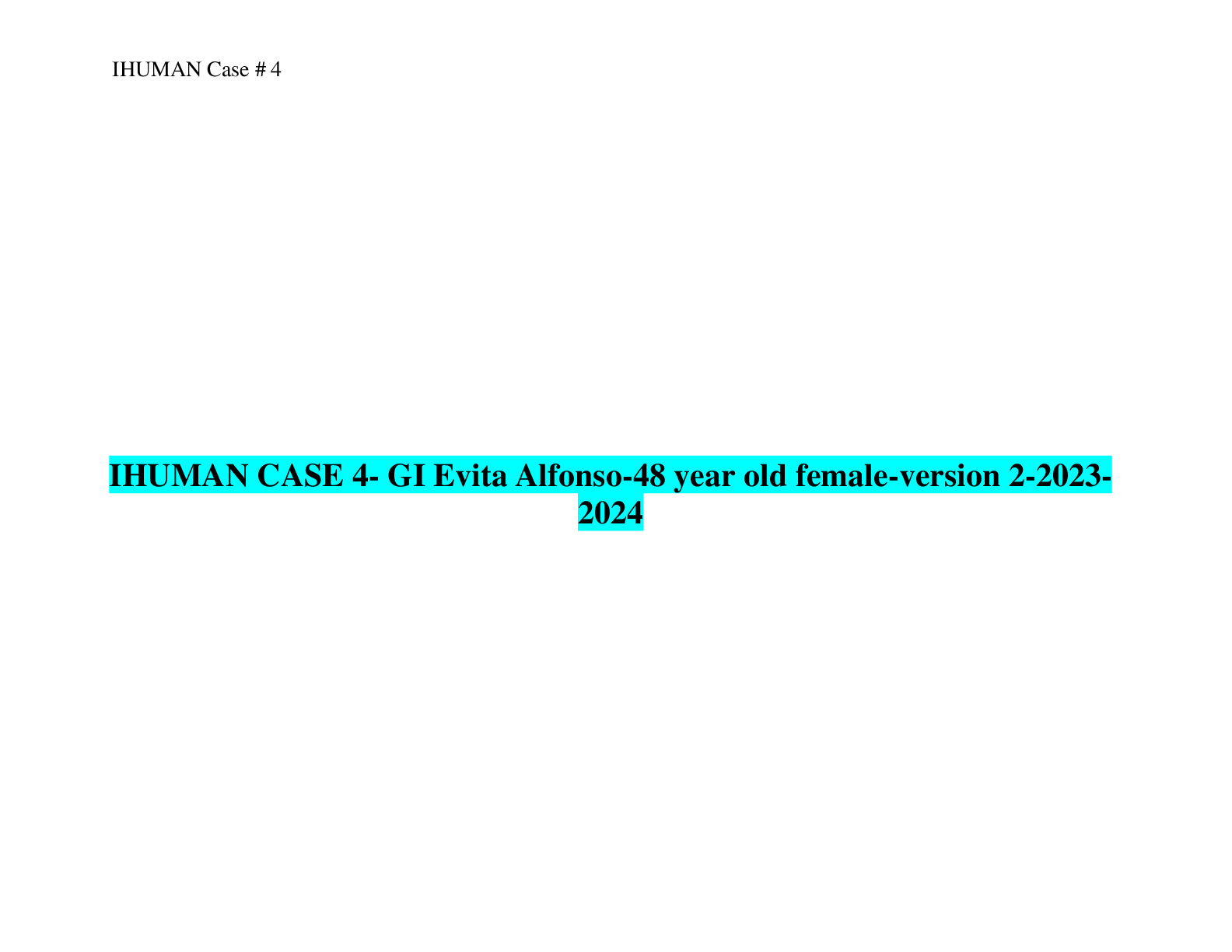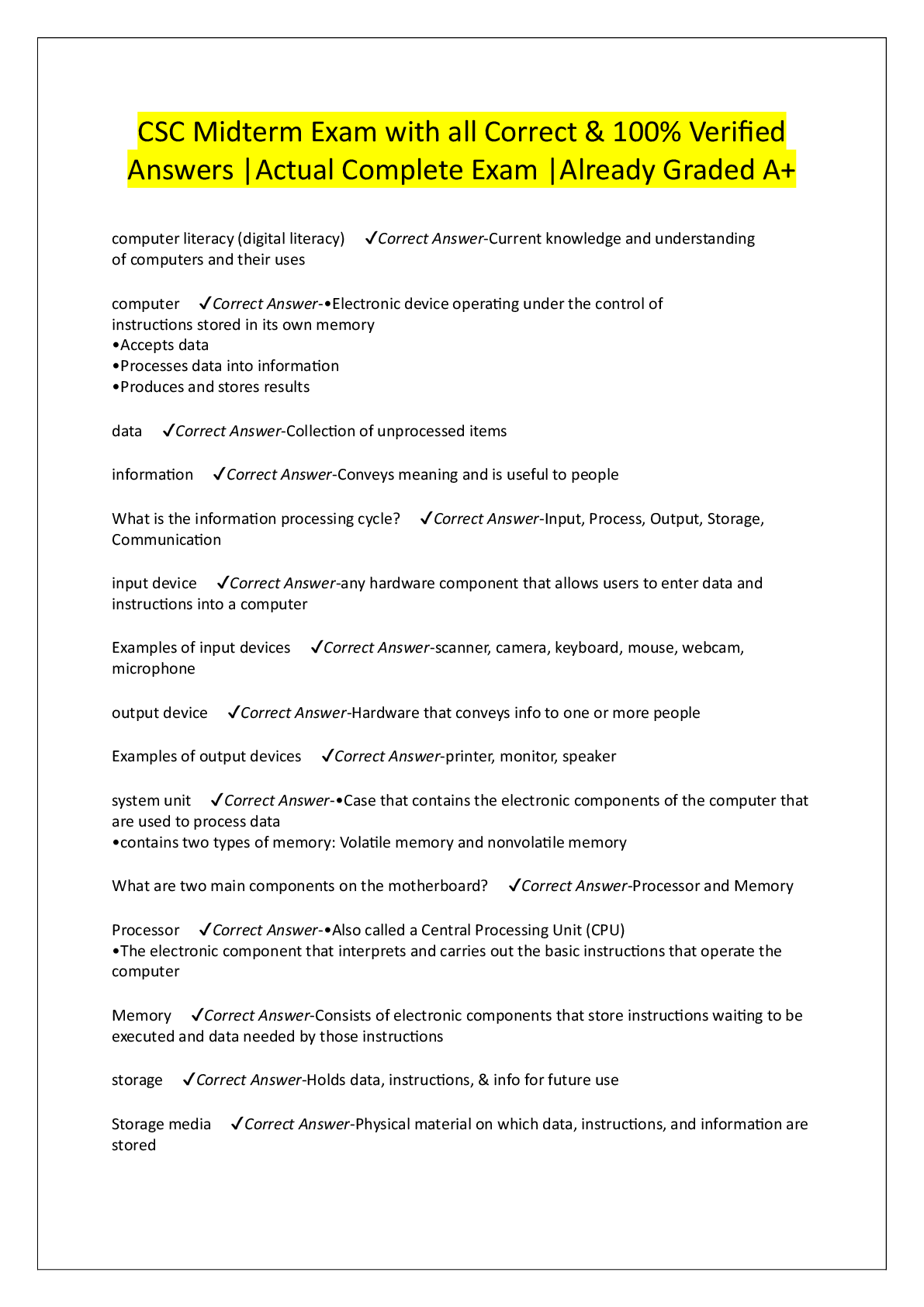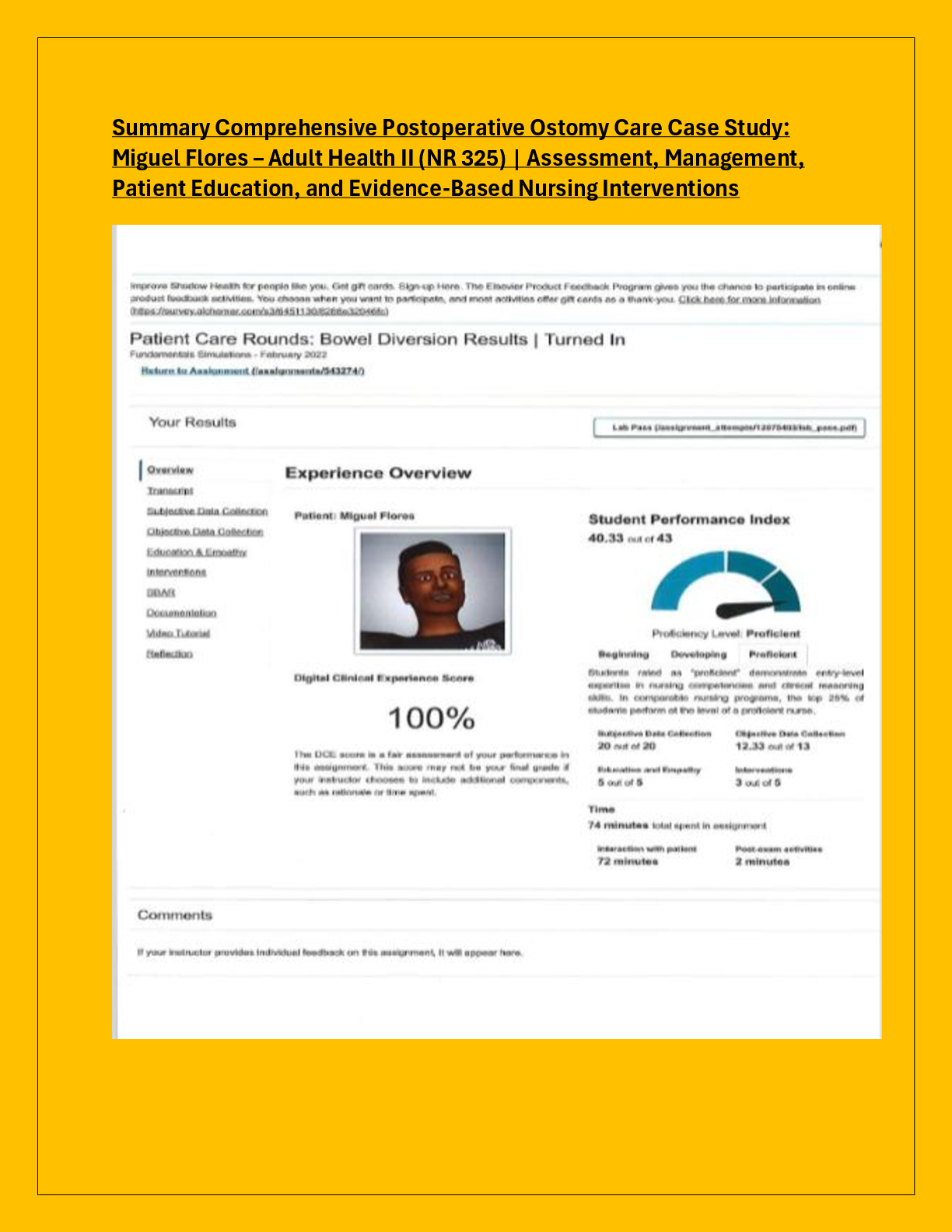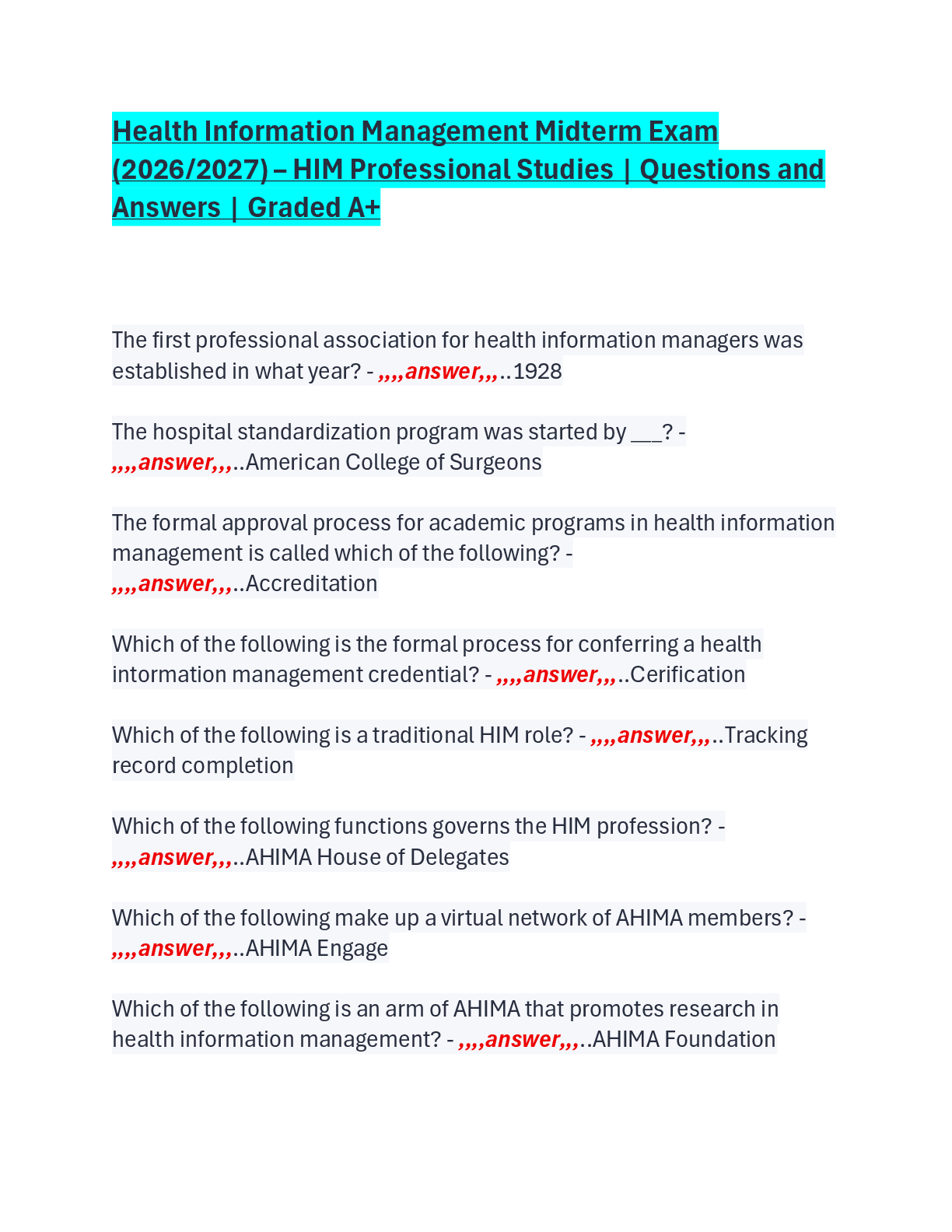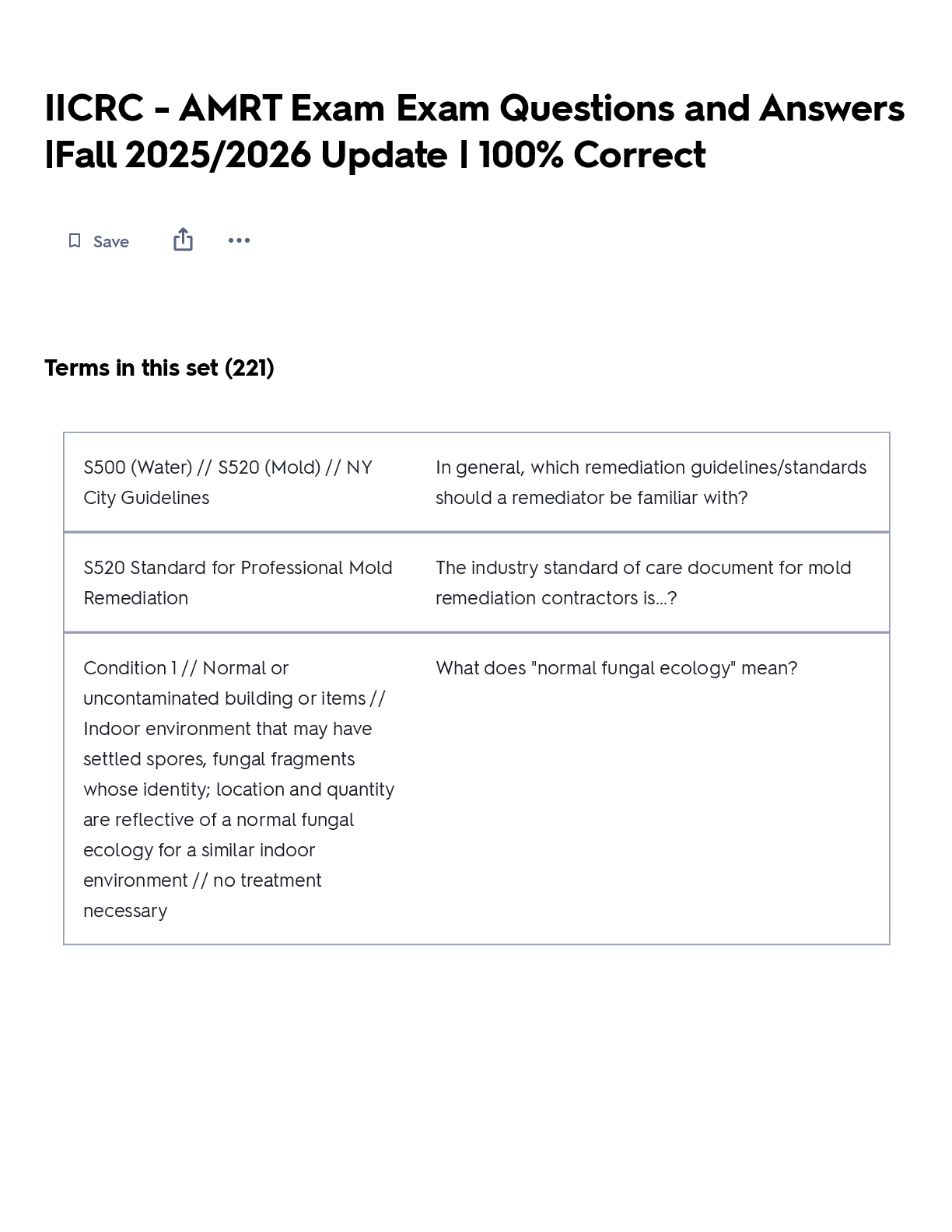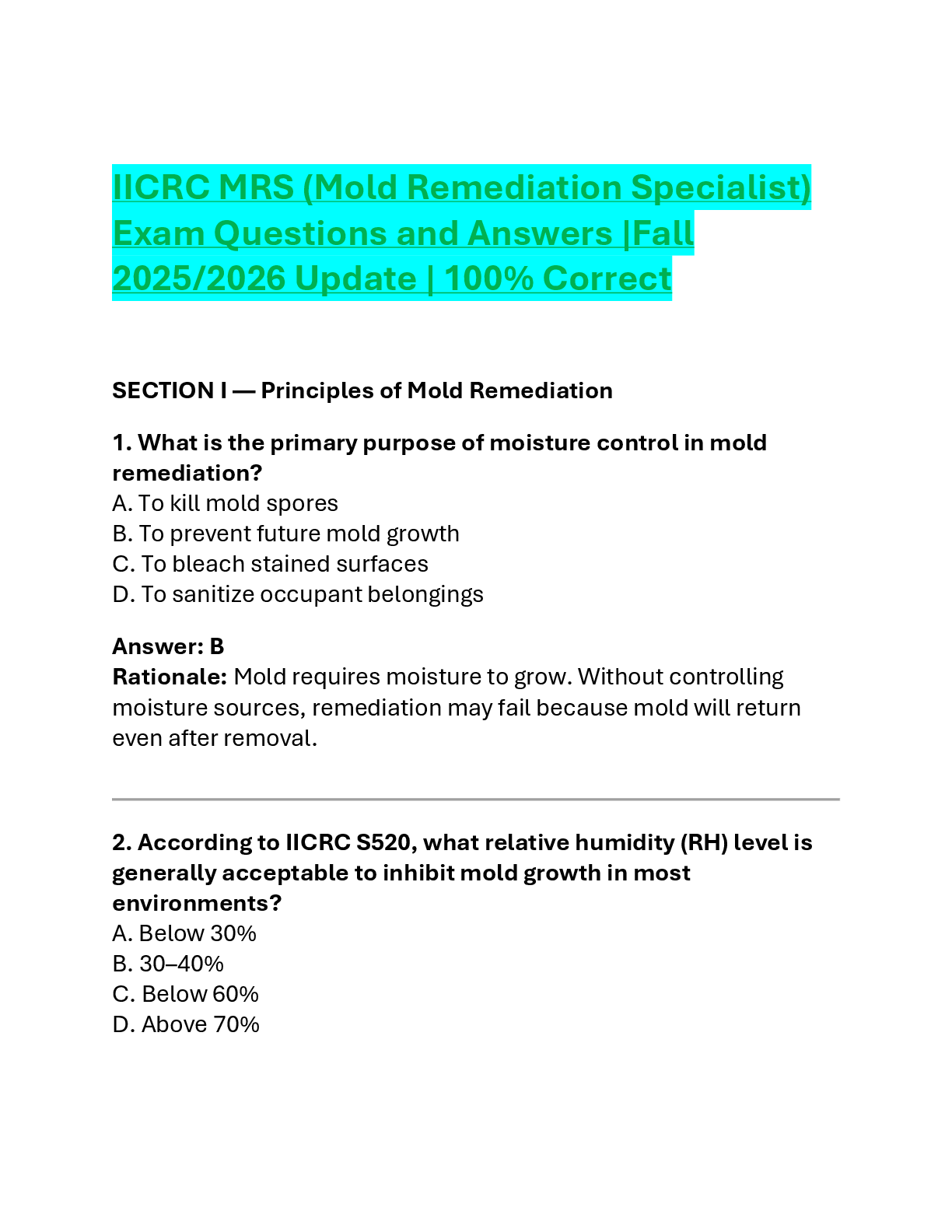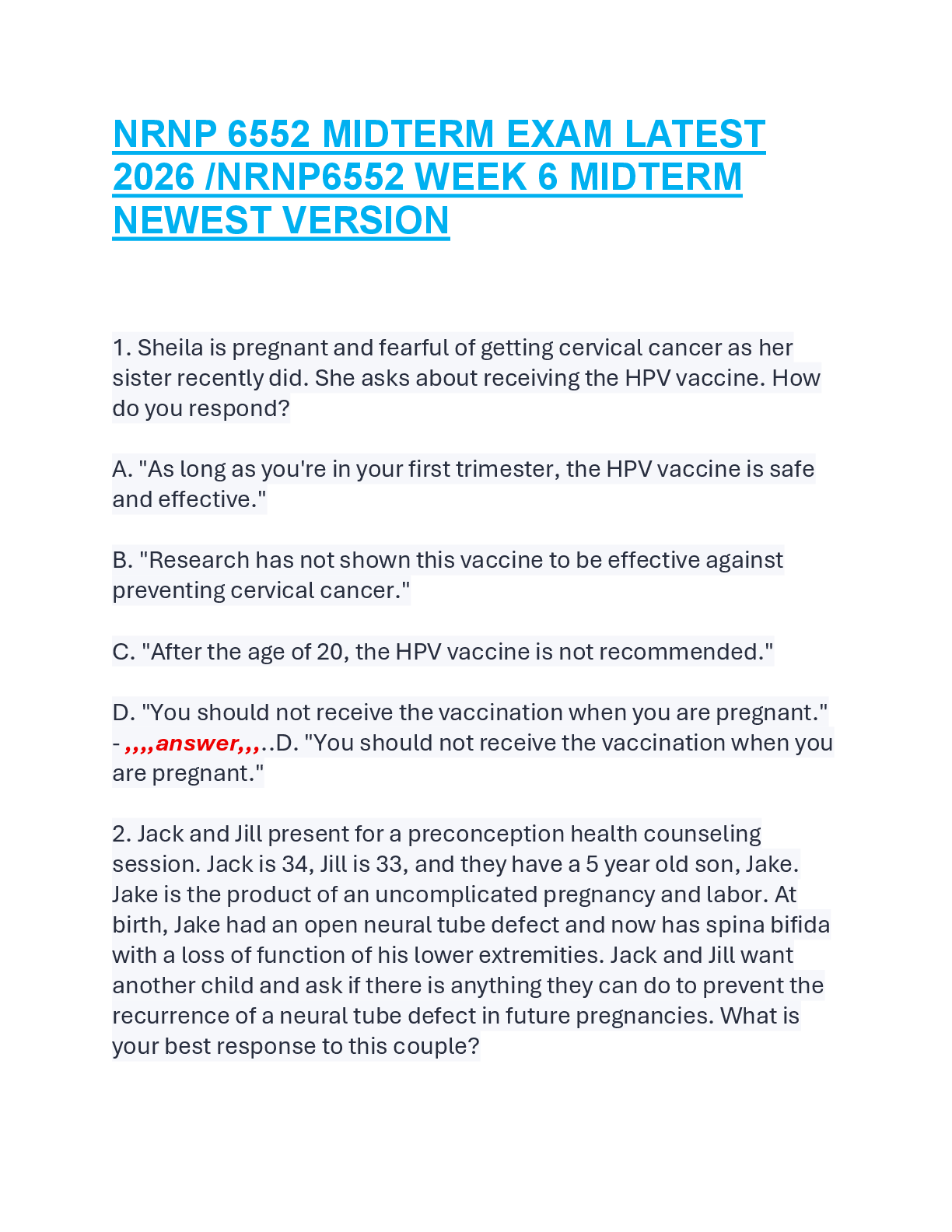NSG 5003- Week 6 Mid-term-graded 100%
Document Content and Description Below
These are all from the test bank for the textbook. What causes the rapid change in the resting membrane potential to initiate an action potential? a. Potassium gates open, and potassium rushes into ... the cell, changing the membrane potential from negative to positive. b. Sodium gates open, and sodium rushes into the cell, changing the membrane potential from negative to positive. c. Sodium gates close, allowing potassium into the cell to change the membrane potential from positive to negative. d. Potassium gates close, allowing sodium into the cell to change the membrane potential from positive to negative. What is a consequence of leakage of lysosomal enzymes during chemical injury? a. Enzymatic digestion of the nucleus and nucleolus occurs, halting DNA synthesis. b. Influx of potassium ions into the mitochondria occurs, halting the ATP production. c. Edema of the Golgi body occurs, preventing the transport of proteins out of the cell. d. Shift of calcium out of the plasma membrane occurs, destroying the cytoskeleton. In hypoxic injury, sodium enters the cell and causes swelling because: a. The cell membrane permeability increases for sodium during periods of hypoxia. b. ATP is insufficient to maintain the pump that keeps sodium out of the cell. c. The lactic acid produced by the hypoxia binds with sodium in the cell. d. Sodium cannot be transported to the cell membrane during hypoxia. What mechanisms occur in the liver cells as a result of lipid accumulation? a. Accumulation of lipids that obstruct the common bile duct, preventing flow of bile from the liver to the gallbladder b. Increased synthesis of triglycerides from fatty acids and decreased synthesis of apoproteins c. Increased binding of lipids with apoproteins to form lipoproteins d. Increased conversion of fatty acids to phospholipids During an IgE-mediated hypersensitivity reaction, the degranulation of mast cells is a result of which receptor action? a. Histamine bound to H2 b. Chemotactic factor binding to the receptor c. Epinephrine bound to mast cells d. Acetylcholine bound to mast cells What is the mechanism that results in type II hypersensitivity reactions? a. Antibodies coat mast cells by binding to receptors that signal its degranulation, followed by a discharge of preformed mediators. b. Antibodies bind to soluble antigens that were released into body fluids, and the immune complexes are then deposited in the tissues. c. Cytotoxic T lymphocytes or lymphokine-producing helper T 1 cells directly attack and destroy cellular targets. d. Antibodies bind to the antigens on the cell surface Type III hypersensitivity reactions are a result of which of the following? a. Antibodies coating mast cells by binding to receptors that signal its degranulation, followed by the discharge of preformed mediators b. Antibodies binding to soluble antigens that were released into body fluids and the immune complexes being deposited in the tissues c. Tc cells or lymphokine-producing Th1 cells directly attacking and destroying cellular targets d. Antibodies binding to the antigen on the cell surface. Tissue damage caused by the deposition of circulating immune complexes containing an antibody against the host DNA is the cause of which disease? a. Hemolytic anemia b. Pernicious anemia c. Systemic lupus erythematosus d. Myasthenia gravis Why does tissue damage occurs in acute rejection after organ transplantation? a. Th1 cells release cytokines that activate infiltrating macrophages, and cytotoxic T cells directly attack the endothelial cells of the transplanted tissue. b. Circulating immune complexes are deposited in the endothelial cells of transplanted tissue, where the complement cascade lyses tissue. c. Receptors on natural killer cells recognize antigens on the cell surface of transplanted tissue, which releases lysosomal enzymes that destroy tissue. d. Antibodies coat the surface of transplanted tissue to which mast cells bind and liberate preformed chemical mediators that destroy tissue. Oncogenes are genes that are capable of: a. Undergoing mutation that directs the synthesis of proteins to accelerate the rate of tissue proliferation b. Directing synthesis of proteins to regulate growth and to provide necessary replacement of tissue c. Encoding proteins that negatively regulate the synthesis of proteins to slow or halt the replacement of tissue d. Undergoing mutation that directs malignant tissue toward blood vessels and lymph nodes for metastasis CONTINUED....... [Show More]
Last updated: 3 years ago
Preview 1 out of 10 pages

Buy this document to get the full access instantly
Instant Download Access after purchase
Buy NowInstant download
We Accept:

Also available in bundle (1)
Click Below to Access Bundle(s)

NSG 5003 mid term and final exams
NSG 5003 mid term and final exams-including study guides
By Studyrepository 3 years ago
$35.5
9
Reviews( 0 )
$13.00
Can't find what you want? Try our AI powered Search
Document information
Connected school, study & course
About the document
Uploaded On
Apr 29, 2022
Number of pages
10
Written in
All
Additional information
This document has been written for:
Uploaded
Apr 29, 2022
Downloads
0
Views
104



